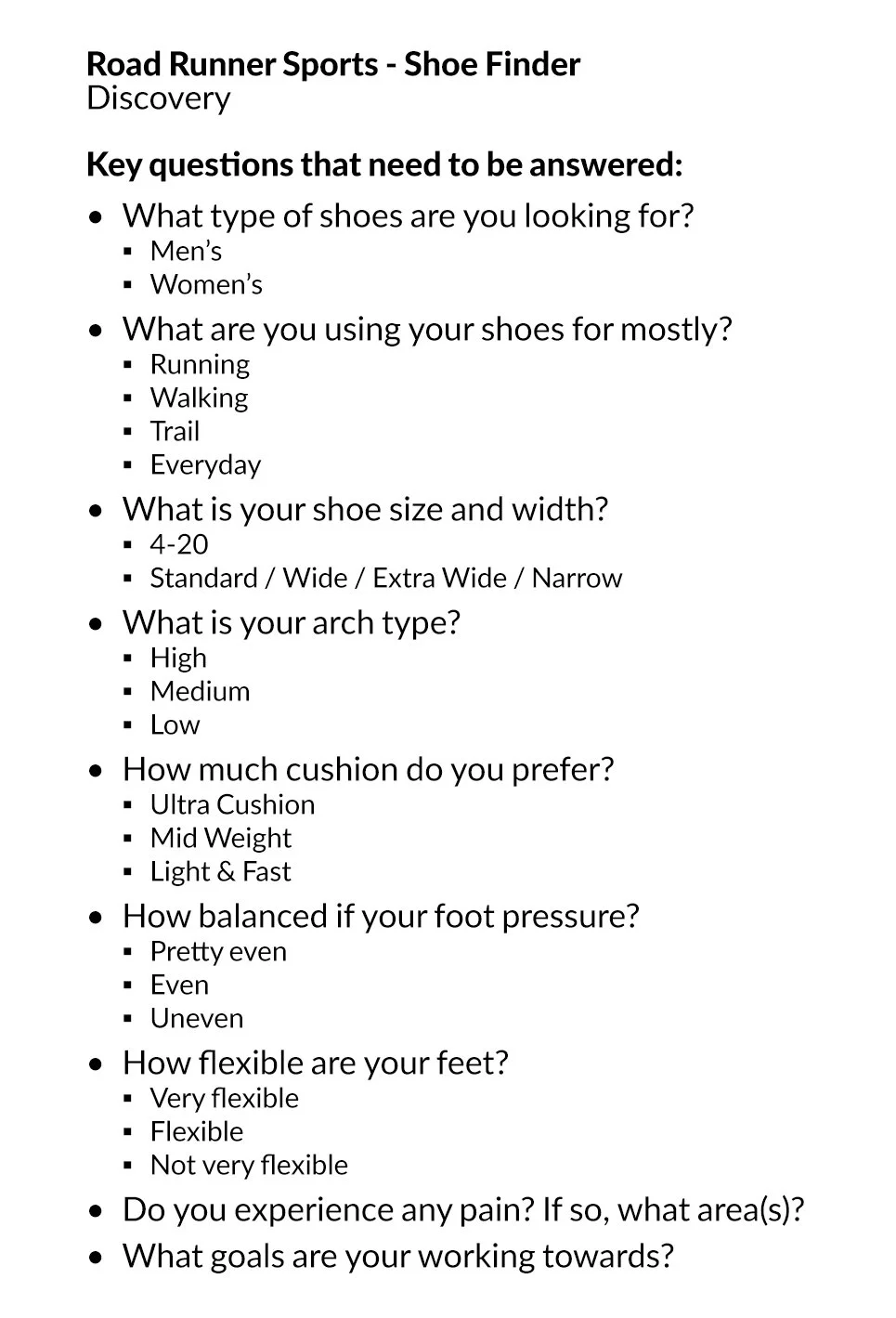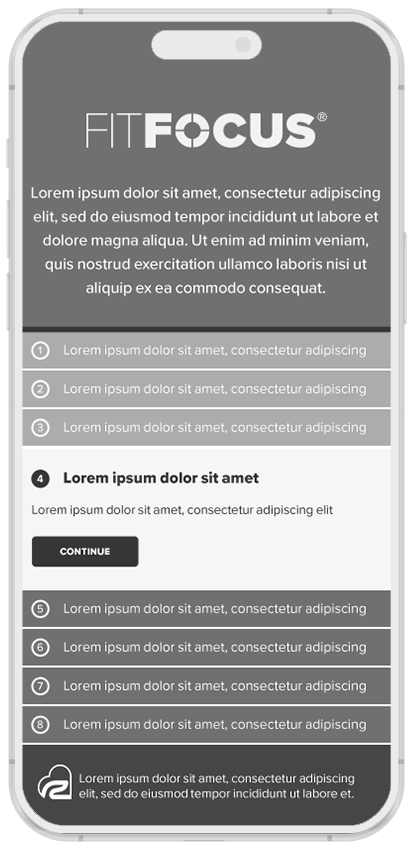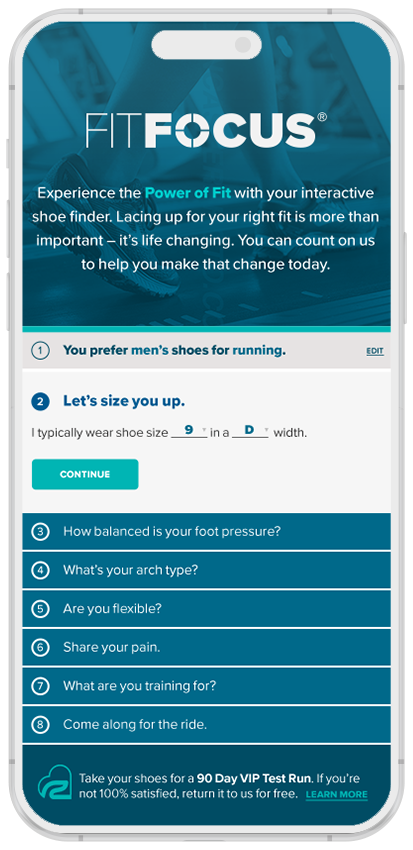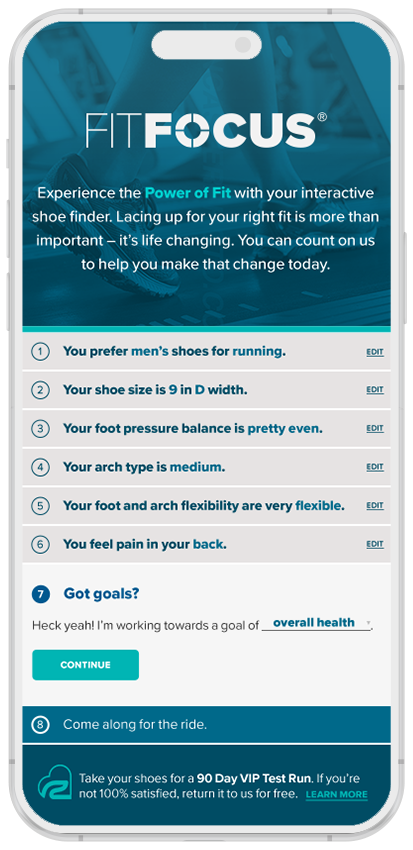Empowering Athletes to Find Their Fit with Confidence
My Role: UX/UI Designer
Overview
Designing a modern, intuitive platform to help athletes find their perfect fit
UX + UI DESIGN
Road Runner Sports is a premier retailer known for helping runners and athletes find high-performance footwear and gear tailored to their needs. I was the UX/UI designer leading the redesign of their online shoe finder to create a more intuitive, performance-focused digital experience.
The Challenge
The existing ShoeDog shoe finder was outdated, visually inconsistent with the Road Runner Sports brand, and offered a clunky user experience. Customers found it confusing and disconnected from the premium, performance-driven products they trusted. The challenge was to redesign the experience into a modern, intuitive platform that guided users seamlessly to their perfect fit.
Discovery
Asking the Right Questions
After meeting with the Senior Product Developer, we aligned on one clear priority: asking the right questions. By focusing on what truly mattered to athletes—their goals, preferences, and pain points—we could create a more personalized and engaging experience. This approach aimed to not only guide users to their perfect fit but also turn first-time visitors into confident, loyal customers.
Project Roadmap
A Better Experience, Built in Phases
Approaching the redesign in phases—starting with usability and mobile optimization, then evolving toward a sleek, performance-driven interface built for today’s digital athlete.
Phase 1: Mobile Optimization
The first phase addressed mobile usability. I restructured the flow for small screens, simplifying interactions and prioritizing speed. This allowed users to complete all eight steps in under three minutes while maintaining clarity, accessibility, and engagement on any mobile device.
Phase 2: Responsive Design
The original experience was desktop-only, creating friction for most users. I implemented a responsive framework with fluid layouts and scalable components to ensure adaptability across devices. This approach streamlined development and delivered a cohesive experience that felt native on every screen.
Design Phase
Wireframes
The wireframes established the structural blueprint for the UI components and interactive features developed in later phases.
Updated Features
Simplified Introduction
The original ShoeDog introduction page was visually dense and failed to orient users. I simplified the composition with targeted imagery, clear messaging, and structured hierarchy to create a more intuitive and engaging first impression.
Old Introduction
Redesigned Introduction
Streamlined Interaction Design
I redesigned the question flow from a static, multi-page format to a dynamic accordion layout, creating a more seamless and intuitive interaction. This update improved visibility of progress, reduced friction, and encouraged task completion within a single responsive experience.
Old Interaction Design
Redesigned Interaction Design
Modernized Results Page
The original results page offered only one product, creating a narrow and underwhelming experience. I restructured it to highlight a primary recommendation supported by alternative options and related accessories, expanding user choice and enhancing visual hierarchy to drive engagement and conversion.



























